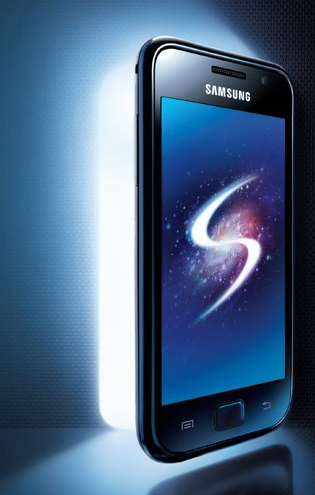Galaxy Not-So “S”
Is your Galaxy S a little laggy (experiences stutters, delays) at times, even on Froyo? It’s not your imagination; your phone’s internal storage is probably the culprit, and LagFix addresses the problem quite cleverly, helping you put the “S” back in your Galaxy.
As you probably know, Galaxy S phones boast either 8GB and 16GB of internal memory. Pretty hefty for an Android phone (the most spacious available, in fact). And yet, the Galaxy S is no more expensive than any comparable, high-end Android phone. So, how did Samsung do it?
Your Galaxy S’s cavernous capacity is owed to Samsung’s choice to use internal SD (rather than Flash EEPROM, HTC’s favored storage method) for system, app and data storage. It is essentially an SD “card” without the plastic enclosure.
Why SD? Flash EEPROM has physical size limitations that prevent it from reaching such high storage capacities on a mobile device, while SD has proven itself capable of storing many times the amount of data on the same square-footage (32GB and beyond). As Android users store more and more apps and data on their phones, Samsung decided to go with SD to provide users more space.
The Issue
Unfortunately, this isn’t a totally ideal role for SD. As a data storage platform, SD is pretty efficient and reliable. In the capacity of acting a solid state disk (doing lots of reading/writing), however, it requires a little help. Enter RyanZA at the XDA forums, who has given the Galaxy S’s SD storage a much-needed fix that resolves lag issues: the aptly-named LagFix.
If you’re interested in what LagFix actually does, feel free to read Ryan’s explanation:
Details about what this fix does:
Creates a VIRTUAL EXT2 filesystem inside the stock RFS filesystem on the internal SD card, with a 4KB block size. This means that this lag fix creates a buffer between the real filesystem and the android system. This buffer should reduce the amount of disk I/O required for all operations by utilizing EXT2 buffering, as well as not writing file access times to disk, etc. It allows only 1GB for application data at this stage, down from the 2GB of application data when running stock.
Folders that are currently supported:
/data/data
/data/system
/data/dalvik-cache
More folders can be added, and should help performance further.
In layman’s terms, it virtually “formats” part of your internal SD card into a file system the Android OS plays a lot more nicely with, and moves commonly accessed system files to that newly formatted area. This results in big, big speed increases across the entire OS, and in applications. Quadrant scores in excess of 2200 are being reported (on Froyo).
Installing LagFix
There are two ways of installing LagFix currently. One is a bit laborious, here’s a link. For us lazy types, there’s an update.zip with everything you need all baked-in, just save it to the root of your SD card, boot into recovery, and apply it.
Full instructions:
1. The update.zip installs all the files needed. It is attached here; http://forum.xda-developers.com/atta...2&d=1281390347
2. Place it on your internal sdcard
3. Turn off your phone.
4. Hold down Up+powerbutton+Menubutton for a couple of seconds until u see the galaxy logo .
5. Use the up and down buttons to get to update.zip.
6. Press menu button on update.zip to select it
7. It installs root, correct busybox (1.17.1) as well as all the scripts needed for the fix and the 'MCR Scripts' app to run the scripts. (NOTE: This version does not install superuser.app which is needed, although the beta update.zip does, so read 'requirements' above if needed)
8. After install, the phone restarts.
9. Go to the newly installed 'MCR Scripts' application from the app list, open it and choose from 3 scripts. For example, Lagfix10024 is the 1gb ex2 version.
10. The script should run and take a few minutes.
11. You should see an 'all complete' prompt, and this means you can close the application.
12. Run quadrant to test if the fix was applied.
Have you tried out RyanZA’s LagFix? How’s it work? Let us know in the comments below!
Source: XDA Forums

